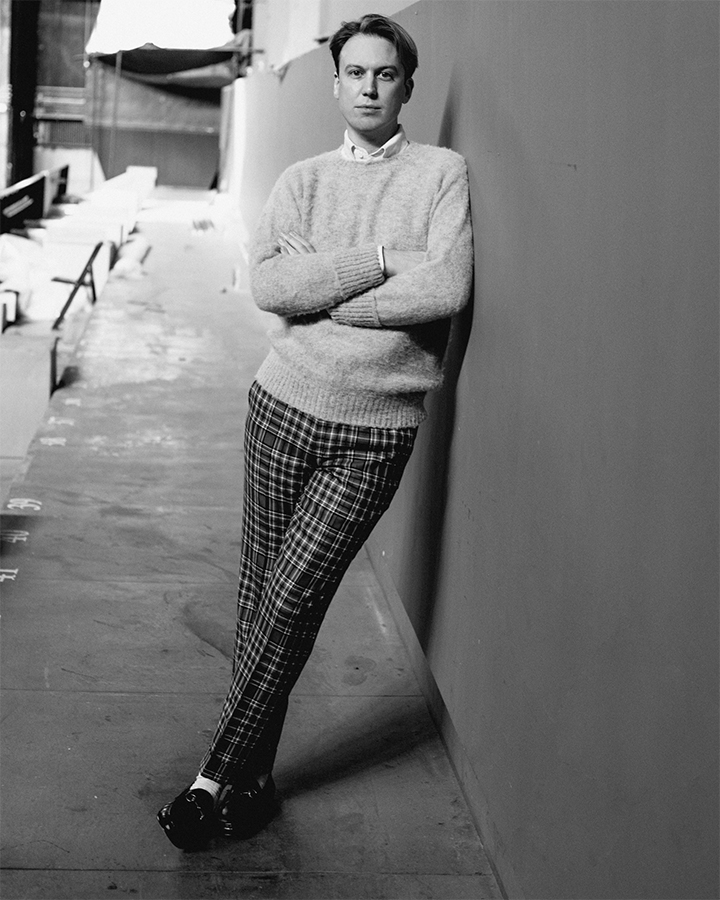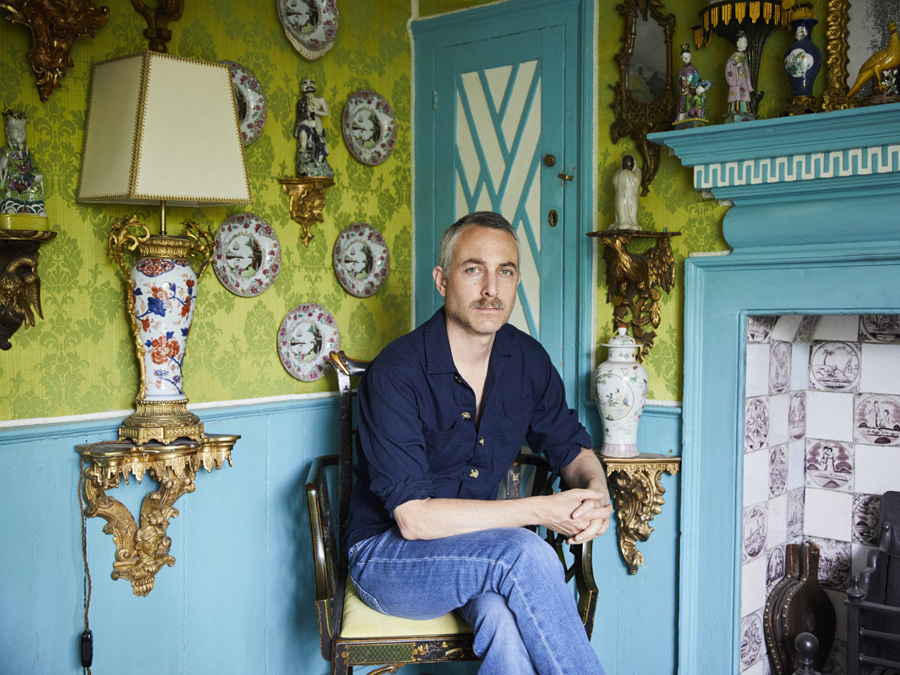IN HIS DEBUT BOOK, AUTHOR MICHAEL DIAZ-GRIFFITH TAKES US INSIDE THE TREASURE-FILLED HOMES OF 22 YOUNG COLLECTORS
By Rhonda Reinhart
“Three of anything makes a collection, but a collecting practice can be ignited, quietly, by a single bewitching object.” That’s how Michael Diaz-Griffith begins The New Antiquarians, his recently released coffee table tome devoted to young people the world over who, like so many others before them, have answered collecting’s ever-enticing siren call. “This book honors that inaugural object,” the author continues, “and the nascent collector’s first step, taken perhaps unknowingly, into a lifetime of desiring, studying, searching, and only occasionally, when the conditions are just right, finding.”
Enlarge

Enlarge

Diaz-Griffith knows of which he writes. A young collector himself, the 36-year-old executive director of the Design Leadership Network has long been enamored with old things, seeking out every opportunity to pursue his “lifelong hunt for art and objects of fascination.” The author previously served as associate executive director of New York City’s Winter Show – the country’s longest-running art and antiques fair – and executive director of Sir John Soane’s Museum Foundation, the New York-based nonprofit supporting the Soane Museum in London. He also co-chairs the Winter Show’s Young Collectors Night and, in 2020, was honored in the pages of House Beautiful for his dedication to antiques, historic art and preservation.
Enlarge

In his introduction to The New Antiquarians, Diaz-Griffith acknowledges that antiques dealers, curators and veteran collectors alike have often bemoaned the lack of young collectors. But, as he writes, “Young collectors do indeed, despite fears to the contrary, exist, and this book is evidence of their existence. At antiques shows and auctions, these New Antiquarians not only look, but buy.”
For proof of these youthful accumulators, look no further than the 272 gorgeously illustrated pages of The New Antiquarians, published this summer by Monacelli, A Phaidon Company. The book takes readers inside the homes of 22 next-generation collectors from London to Los Angeles, Maine to Louisiana, each of their dwellings a testament to the thrill of the hunt. In addition to showcasing the diverse collections these antiquarians have acquired, the book features intimate portraits of the collectors in their personal spaces, giving us a peek not only at the things they love, but also how they live in and interact with their surroundings.
In New York’s Chinatown, married designers Emily Adams Bode Aujla and Aaron Singh Aujla have filled their color-splashed loft with a mix of antiques, vintage items and contemporary art. In their apartment – which Diaz-Griffith describes as a “Cape Cod-meets-Chandigarh cosmos swirling above Lower Manhattan” – antique Indian figurines and a 1960s Picasso print nuzzle up to vintage textiles and family heirlooms.
Enlarge

Enlarge

Meanwhile, in midtown Manhattan, 32-year-old Adam Charlap Hyman brings together Victorian majolica, Aesthetic Movement furniture and Italian ceramics in a playful yet sophisticated space where past and present happily coexist. One particularly inspired spot in the designer’s home features an antique Aubusson tapestry in delightful contrast with a surreal Nicola L. eye lamp and a curvy 1970s sofa by Klaus Uredat.
Enlarge

Enlarge

And in Brooklyn, Collier Calandruccio counts among his objects of affection klismos chairs, 16th– to 18th-century tapestries, Alpine landscapes and parcel-gilt furniture. An antiques dealer, Calandruccio, the author notes, “is on a mission to fill the world, not just his own apartment, with a beauty beyond possession.”
The eclectic assemblages continue across the country – and across the pond – in the abodes of collectors including Alex Tieghi-Walker, whose Los Angeles home houses treasures such as an antique Welsh oak dresser teeming with antique Japanese bowls and contemporary Mexican cups picked up on his travels. And fellow Angeleno Jared Frank, whose whimsically decorated apartment shows that this collector is a master of displaying as much as acquiring.
Enlarge

In Deal, England, Argentine British artist Pablo Bronstein has packed his home with Delft pottery, Chinese export figures and English silver sugar casters – the latter an obsession that began when his grandmother gifted him, at his urging, an antique silver caster when he was 16. “Like a magnet, he had drawn the silver caster toward himself,” Diaz-Griffith writes, “the first of many objects that would pass into his possession, and perhaps his soul, through his own efforts. He had become a collector.”
Other chapters in The New Antiquarians feature collectors in New Orleans and Baton Rouge, Louisiana; Locust Valley, New York; Wiscasset, Maine; London; and other locales – confirming that, as Diaz-Griffith notes in his book’s introduction, young people who appreciate, preserve and amass pieces of the past are out there.
In fact, they’re just about everywhere.
 RHONDA REINHART is editor of Intelligent Collector.
RHONDA REINHART is editor of Intelligent Collector.

